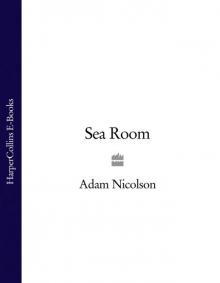- Home
- Adam Nicolson
Men of Honour Page 4
Men of Honour Read online
Page 4
The French struggled and failed to keep up. Even by the measure of looking after their own men, they failed. In 1801, Admiral Ganteaume in command of the premier fleet in France, the Brest squadron, wrote imploringly to the minister:
I once more call your attention to the terrible state in which the sea men are left, unpaid for fifteen months, naked or covered with rags, badly fed, down in the mouth; in a word sunk under the weight of the deepest and most humiliating wretchedness.
Since the late 17th century, the French state had reserved large slices of their native oak forest for those hulls, but it was not enough and they ransacked Italian oakwoods and Corsican pinewoods for their needs. The catastrophes of the 1790s had exacerbated the problem. When the British Admiral Lord Hood burnt nine French ships of the line and removed three more from Toulon in December 1793 (he had already taken one 74, an earlier Scipion, which soon sank) he also burned untold quantities of slowly maturing French oak from those government forests, stacked in the Toulon yards, and even larger quantities of mast—and spar-timber from the Baltic. The total destruction in 1798 of the French Mediterranean fleet at the Battle of the Nile, and in a series of individual ship actions after it, were both key elements in a form of attritional warfare which left the French naval establishment bruised, bleeding and diminished. The figures make it clear enough. In 1793, Britain had 135 ships-of-the-line and 133 frigates, the French well behind with 80 ships-of-the-line and 66 frigates. By 1801, at the peace of Amiens, the number of British warships had risen to 202 ships-of-the-line and 277 frigates. France at the same moment had 39 ships of the line and 35 frigates. Attrition had exacted its price.
In many ways, Trafalgar had been won at Toulon and the Nile. More, though, than technological and material failure, the long unrolling political crisis in France during the last years of the 18th century meant that the navy did not have the necessary depth and consistency of support it needed. The failing monarchy, the Revolution, the Terror, the string of half-competent administrations in the late 1790s and the coming to power of Napoleon—the ‘land animal’ as he was called—all, in their different ways, failed the French navy.
In the 19th century, it was often said by French conservative historians that the triumphant French navy of the American War of Independence was destroyed by the Revolution and the chaos that followed. That is not true. The endemic weaknesses stretched back into the management and structures of the pre-revolutionary navy itself. The French officer corps was traditionally formed into two divisions: l’épée and la plume, the fighting and the administrative arms. Each regarded the other with contempt: the pen thinking the sword incompetent, the sword regarding the pen as common. The British Board of Admiralty had a hint of the same division between politically appointed civilians and experienced, fighting ‘sea lords’, but further down the ranks of the Royal Navy, fighting tasks, sailing tasks and administrative tasks were all performed, at different stages, by the same individuals. The three core demands of a navy—to supply and fit itself; to survive the sea; and to kill the enemy—were understood in Britain to be part of a single integrated whole. In both Spain and France, that single organism was institutionally divided into conflicting and competing parts.
This was largely a reflection of social structure. In England, the officers of the navy came from a broad spread of English society, stretching from the lower reaches of the aristocracy through the landed gentry and professional classes to (occasionally) the genuinely poor. Of Nelson’s great predecessors in the 18th century, for example, Sir Cloudesley Shovell, who ran his fleet up on rocks off Scilly, was the son of a Norwich merchant; Byng, who was shot for cowardice off Minorca, was the son of a Kentish gentleman; Vernon was the son of a London merchant; Anson from Staffordshire gentry; Hawke the son of a barrister; Rodney from a family of army officers, and with his mother’s father a judge; Howe was the second son of an Irish peer; Lord Hood was the son of a vicar, like Nelson himself; Lord Barham’s father was a customs officer; St Vincent’s a lawyer; and Lord Cornwallis was the fourth son of a peer, who like his brothers had been educated at Eton.
Those are the great men of the 18th-century navy. There is a drift towards high social status among them, but it is a far from exclusive set. Their mixed social origins are evidence of a kind of responsive elasticity in the hiring and promoting strategies of the Royal Navy. Nothing could have been more different in the Marine Royale of Bourbon France. There, any access to the officer corps was, as in Spain, rigidly restricted to members of the aristocracy. Access to the Grand Corps was through the élite trainee cadres of the Gardes de la Marine and the Gardes du Pavillon.
In the British navy, the test to become a junior officer, a lieutenant, depended on having spent at least six years at sea as a midshipman and an ability to answer a series of disturbingly sea-based questions. As the standard form of words approving a promotion to lieutenant expressed it, the candidate had to prove that he could
Splice, Knot, Reef a sail, work a Ship Sailing, Shift his Tides, keep a Reckoning of a Ships way by Plain Sailing and Mercator, Observe by the Sun or Star, find the variation of the Compass and is qualified to do his Duty as an Able Seaman and a Midshipman.
In May 1805, one young man, William Badcock, was sent forward by his captain Thomas Fremantle of the Neptune to sit his exam. He was in a state of extreme nerves and the three captains on the examining board allowed him to sit quietly for a few moments so that he would do himself justice. Then they began.
I was desired to stand up, and consider myself on the quarterdeck of a man-of-war at Spithead—‘unmoor’—‘get underway’—‘stand out to sea’—‘make and shorten sail’—‘reef’—‘return into port’—‘unrig the foremast and bowsprit, and rig them again’. I got into a scrape after reefing for not overhauling the reef tackles when reefing the sails [because unless those tackles were overhauled, the sails would not set fair]. However they passed me, and desired me to come again the next day to receive my passing certificate. I made the captains the best bow I could and, without staying, to look behind me, bolted out of the room…
For the young French aristocrat officers of the gardes, there was no equivalent. They were given an education in the great ports of Brest, Rochefort and Toulon and the curriculum they followed was essentially mathematical. They studied hydrography and the customs of the shipbuilding trade in both England and Spain, but no history, nothing about fighting or sailing tactics. There were daily sessions set aside for both dancing and fencing. Any suggestion that a French officer would know how to steer a ship, reef a sail, splice a warp or make a Single Diamond Knot, a Sprit-Sail Sheet Knot, a Carrick Bend, a Midshipman’s Hitch, a throat seizing, a mouse for a stay or puddings for yards, would have drawn as quizzical a look from him as it does from us. All those tasks, and tens more, described in detail and with diagrams in the midshipman’s vade mecum, ‘The Young Sea Officer’s Sheet Anchor’, first published in Leeds in 1808, but drawing on centuries-long expectation, were required to be known by an officer in the British Royal Navy. There was a naval academy in England established at Dartmouth, but it was not the usual or favoured route to a successful naval career. The British training ground was at sea.
In this was the core difference between the middleclass British and upper-class French and Spanish officer corps. For an aristocrat, failure in battle does not erode his standing or his honour. He remains, as long as he has behaved with courage, the man he was born to be. For the younger son of the English gentry, or of a lawyer or merchant, as most British naval officers were, there is no such destined luxury. If he fails at sea, his standing is diminished; he has not won the prize money which will set him up at home; his name is not gilded with honour; he has failed in the same way that a failing entrepreneur has failed. To preserve his honour and his name, he needs to win. Victory is neither a luxury nor an ornament. It is a compulsion and a necessity.
The young French gardes, convinced of their genetic and social superiority, often behaved with a k
ind of violent arrogance which more senior naval officers could scarcely control. In 1774, a senior naval administrator, Vice—Admiral Laurent Jean-François Truguet condemned it.
The spirit of independence, of contrariness, of egotism which has long distinguished the different classes of naval officers, and which is so opposed to the good of the King’s service, certainly is borne in the companies of the gardes de la marine and du pavillon; they perpetuate it in carrying it with them to all ranks.
No one should suggest that the officer corps of the ancien regime in France was made up of exclusively self-indulgent young blue bloods. There were a few officers of nonaristocratic lineage—les bleus, as they were called, contrasted with les rouges of the gardes—even if they were looked down on and excluded from the most valuable commands. In the 1780s there had been half-hearted attempts to recruit and promote men with a regard more to their skills than their names. There were officers among the aristocrats of great resource, ingenuity, courage and dedication to their profession. And the pre-revolutionary aristocracy was more open to recruitment from the bourgeoisie and the professional classes than is sometimes realised. Fully two-thirds of French titles dated back no further than the 1620s.
Nevertheless, the higher ranks in the French navy were strikingly incompetent. Fleet commands were more often than not given to old and decrepit admirals. Only three of the 22 vice-admirals promoted between 1715 and 1789 had ever commanded fleets at sea and the rank of lieutenantgeneral, a pivotal fleet position, was equally carelessly filled with the clueless: only eighteen of the sixty-eight lieutenants-généraux appointed between 1720 and 1784 had held seagoing commands. The man in charge of the navy as a whole, the Admiral of France, was the Duc de Penthièvre, a relative of the king, who had never been on board a ship and treated the navy merely as a useful source of income.
It would be a mistake, though, to think of the French naval officers as doing little more than living out a selfdeluded, aristocratic fantasia. It is true that they were deeply attached to and proud of their aristocratic traditions. It is equally true that there was fierce regional conflict between the Breton aristocrats and the Provençal aristocrats with which the Brest and Toulon fleets were officered. And it is true that to many of them their membership of the Hospitallers of St John of Jerusalem, or the Knights of Malta, the order of military Christian Knights founded in the 12th century as one of the vehicles of an ardent Christianity fighting Islam in the Mediterranean, was of equal importance to them as their duties with the French navy.
But these educated and professional men were inevitably alert to the forces of the Enlightenment unfolding around them. Their élitism had adopted modern dress and many of the Grand Corps thought of themselves as modern scientific men. In the 1780s, the French naval officer began to take up serious modern studies in navigation, the fixing of longitude, the rationalist understanding of the essence of sea-battle and other aspects of the sea, cartography and ship-building, as well learning and exercising in gunnery and fleet tactics. But, whatever its dress, the attitudes remained élitist, a step away from the antique Spanish grandeur, but at least as far removed from the British practice, which, from the very beginning, engaged the young midshipmen with the workings of the ship and its men.
The overall commander of the combined French and Spanish fleets at Trafalgar came from precisely such a tradition, as did his two deputy admirals. All three were aristocrats. Pierre-Charles-Jean-Baptiste-Silvestre Villeneuve was, until 1793, de Villeneuve, when he quietly dropped the incriminating preposition. He became what all selfpreservative aristocrats in revolutionary France became, a ‘ci-devant’, a Heretofore. But there was little he could do to disguise his patrician origins. He was a grandee from Provence, in all probability a pious Catholic, perceptibly well bred, reserved in manner, exquisite in dress and refined in demeanour. One ancestor had fought alongside Roland in the pass at Roncesvalles; others had been on the crusades. He was the 91st Villeneuve to be a Knight of Malta. He was an educated man, who would quote lines from the great French tragedians, with an alert and supple sense of irony at the predicament in which the revolutionary era had placed him, and with a devastating sense of honour and duty which would, in the end, be his downfall. Napoleon, comparing these qualities with his requirement for all-consuming ardour, called Villeneuve a poltron de tête, an intellectual coward, a man perhaps too refined for the brutalities which the moment required of him.
The navy of which Villeneuve was now a part was scarcely recognisable from the one he had joined as a boy. After 1789, it became an obvious target of revolutionary rage. It was a symbol of royal power in the French provinces, easily attacked by the populace when in harbour, and it was an organisation boiling over with the discontent and argumentativeness on which revolutionary movements feed. The Bourbon navy had never been able to pay the notoriously corrupt and self-confident dockyard workers and government authority soon broke down in the yards at Toulon and Brest. Throughout the 1790s, the British Admiralty had exactly the same problems with the skilled, articulate workforce in the British dockyards, the same economic and social energies bubbling up on both sides of the English Channel. In Britain, such stirrings were controlled by a careful imposition of state authority. Trouble-makers were excluded; many of them were imprisoned on charges framed according to new anti-collectivist legislation rapidly passed by a Pitt government in political panic. It was called, at the time, the ‘White Terror’: Habeas Corpus was suspended in 1794 and again in 1798; a Treason and Sedition Act was passed in 1795, an Unlawful Oaths Act in 1797, a Corresponding Societies Act in 1799. Public meetings were banned and spies recruited. In the Royal Navy itself, uncompromising punishments were dealt out to the 47 ringleaders of the naval mutinies in 1797. Those men were mostly hanged, according to explicit Admiralty orders, by men from their own ships: men forced, by the authority of the state, to hang their own friends. By such methods, dissent was effectively suppressed in Britain until after Waterloo.
In France, though, the revolutionary state itself could not, at least initially, impose such repressive order on the popular will. Instead it faced an ideological conundrum: how could it discipline the popular will on which its own legitimacy was said to be founded? In the revolutionary navy, all citizens were to be eligible for all ranks. The habits of deference were to be banished by the ideals of equality. Discipline based on authority was to be replaced by discipline based on voluntary compliance. As Napoleon later reflected from St Helena, ‘It was part of the political religion of the France of that day to make war in the name of principles.’ For the old officer class, it was a catastrophe and their response was to abscond. By November 1791, 403 of Brest’s 600 officers were absent, most without leave. The following February, one captain of a ship-of-the-line in Brest wrote anonymously to the Minister of Marine in Paris:
A terrible fate awaits those who will command ships in the future, because they will be disobeyed and scorned with impunity. What has happened aboard various ships proves that juries can excuse faults of any kind: the most complete revolt becomes a crime that is scarcely punishable. These offences are recent, and no order of things permits the hope of a happier future.
In 1792, only 2 out of 9 vice-admirals, 2 out of 18 rear-admirals, 42 out of 170 captains and 390 out of 750 lieutenants remained at their posts. Those who did found themselves with nowhere to turn. ‘The tone of the seamen is wholly ruined,’ Admiral Morard de Galles wrote on 2 March 1793. He had been at sea in his flagship when her headsails were carried away in a storm, and it became imperative to wear ship, taking her stern through the wind on to the other tack. ‘If I had a crew such as we formerly had,’ Morard wrote to the Minister,
I would have used means which would have succeeded; but despite exhortations and threats, I could not get thirty seamen on deck. The army gunners and greater part of the marine troops behaved better. They did what they were told; but the seamen, even the petty officers, did not show themselves.
Naval affairs reached th
eir deepest crisis when in September 1793 a Jacobin mob murdered a naval officer in Toulon and washed their hands in his blood.
The sequence of revolution and mutiny, the punishment and emigration of officers, followed by the rolling waves of political chaos, gave fruit to the Reign of Terror, instituted by decree on September 5 1793. ‘It is no longer, as under the Old Regime, the man that you obey,’ the National Convention’s Committee of Public Safety told the people, ‘it is the law; it is la Patrie.’
The Convention appointed a ferocious revolutionary zealot, André Jeanbon Saint-André, as its representative responsible for rebuilding the Republic’s navy after the chaos of the early revolutionary years. ‘Because all here was gangrenous,’ he told the fleet in Brest in October 1793, ‘all needed the scalpel of patriotism, the billhook of Republicanism.’ Guillotines were set up on pontoons among the fleet so that the crews could see the punishments dealt out to the mutinous. A form of naval terror was instituted, during which the language of French naval administration reached new depths of Orwellian doublespeak: ‘Do not think that we usurp your rights,’ Jeanbon told the men who were to be executed
when we defend them; to assist you is not to oppress you; to break your chains like this is not to attack your liberty! They say we exercise arbitrary power; they accuse us of being despots: Despots! Us! Hah! Doubtless, if it is despotism which is necessary for the triumph of liberty, this despotism is political regeneration.

 The Gentry
The Gentry Why Homer Matters
Why Homer Matters God's Secretaries_The Making of the King James Bible
God's Secretaries_The Making of the King James Bible Men of Honour
Men of Honour Sissinghurst, an Unfinished History
Sissinghurst, an Unfinished History Smell of Summer Grass
Smell of Summer Grass Sea Room
Sea Room God's Secretaries
God's Secretaries Atlantic Britain
Atlantic Britain